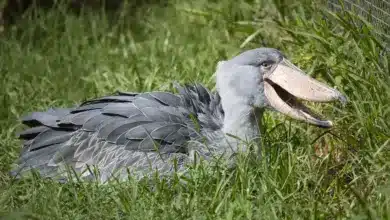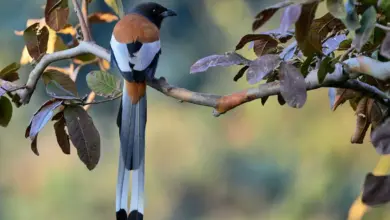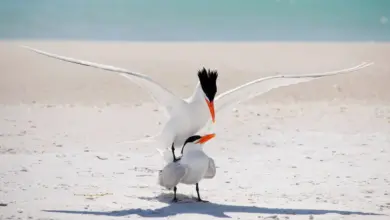Eurasian Oystercatchers
Oystercatchers … Oystercatcher Species Photo Gallery
The Eurasian Oystercatchers (Haematopus ostralegus) – also commonly referred to as Common Pied Oystercatchers, or in Europe simply known as Oystercatchers – are members of the wader (shorebird) family.
Notwithstanding their common name, oysters don’t form a large part of their diet. However, they are believed to be the only wader species to be able to open oysters at all; therefore, they still live up to their name.
The Oystercatcher is the national bird of the Faroe Islands.
Subspecies, Ranges, and IDs
- Haematopus ostralegus ostralegus – Nominate Race
- Found in Europe and the coasts of Eastern Europe
- ID: Lacks white on the shafts of the outer 2-3 primaries (longest wing feathers). There are no white markings on the outer webs of the outer five primary feathers.
- Haematopus ostralegus longipes
- Found in Central Asia and Russia
- ID: Brownish upper plumage. The nasal groove extends more than halfway along the bill.
- Haematopus ostralegus osculans
- Ranges from Kamchatka in the Russian Far East and northern parts of China.
- ID: The nasal groove stops short of the halfway mark.
Distribution / Range
Eurasian Oystercatchers are the most widespread of all oystercatchers. Three races have been identified to breed in Western Europe, central Eurasia, Kamchatka, China, and Western coast of Korea; they are the only oystercatchers in this range.
The European populations mostly breed in northern Europe, and migrate south to winter in the southern parts of Europe and north Africa.
Those occurring in Ireland, Great Britain and along adjacent European coasts are mostly resident (non-migratory), although some migratory movements have been identified; for example those breeding in northern England or Scotland move south to the estuaries of south-west England for the winter.
Similar migratory patterns have been identified in the Asian populations.
Outside the breeding season, these birds gather in large flocks.
Description
The Oystercatchers are amongst the largest waders within their range; measuring 40–45 cm (16–18 in) in length (including the tail). Their wingspan is about 80 – 85 cm (31 – 33 inches).
The bill that is about 8 – 9 cm (3 – 3.5 inches) long; the bill length shows a gradual increase from west to east. The bill shape varies depending on the species. Oystercatchers with broad bill tips open mollusks by prying them apart or hammering through the shell. Those with pointed bills tend to dig up worms.
Their plumage is black above and white below. The legs and the broad bills are red. The bill is well adapted for smashing or prying open mollusks, such as mussels or for finding earthworms in the mud.
In flight, they can be identified by the white patches on the wings and tails.
Juveniles have a browner plumage; they have a white neck collar and a duller bill.
Breeding / Nesting
They typically nest on the coast or on inland gravelly islands. The nest is typically made in a bare scrape on pebbles.
The average clutch consists of 2 – 4 eggs
Call / Vocalization
Their calls are described as distinctive loud piping.
Alternate (Global) Names
Afrikaans: Bonttobie … Albanian: Laraska e detit … Arabic: ??? ??????, ??? ?????? ???? … Azerbaijani: Sa?-sa?an cüllüt … Basque: Garsa de mar, Itsas mika … Belarusian: ?????? … Bulgarian: ???????? … Breton: Ar big-vor, Morbig, Pig-vor … Catalan: Alena, Garsa de mar, Garsa de mar … Chinese: [li-heng], [li-yu], ? ?, ??, ??, ?? … Cornish: Morbyasen … Croatian: Oštrigar, Oštrigar kova? … Czech: ústøièník velký, Ústricník velký, Ústri?ník velký, Úst?i?ník velký
Danish: Strandskade … Dutch: Scholekster … Finnish: Meriharakka … Faroese: Gestur, Tjaldur … French: Huîtrier pie … Frisian: Strnljip … Irish: Gobadán, Roilleach … Gaelic: Gille-Brìghde … German: Austernfischer … Greek: (??????????) ????????????, ???????????? … Galician: Gabita, Garsa de mar … Hungarian: Csigaforgató … Icelandic: Tjaldur … Italian: Beccaccia di mare, Beccaccia di mare paleartica … Japanese: Miya kodori, miyakodori, Miyako-dori, Miyako-shigi … Japanese: ?????, ????? … Korean: ??????? … Lithuanian: J?rin? šarka, Juršarke … Latvian: J?ras žagata, Žagatt?rti?š … Maori: Torea … Macedonian: ?????????? ???????? … Maltese: Gallina tal-Ba?ar … Norwegian: Kjell, Tjeld … Polish: ostrygojad, Ostrygojad zwyczajny … Portuguese: Ostraceiro, Ostraceiro-europeu … Romansh: austrel … Russian: Kulik-soroka, ?????-??????, ?????-?????? ????????????, ???????????? ?????-?????? … Scots: Gille brighde … Slovak: lastúrniciar strakatý, lastúrni?iar strakatý … Slovenian: školjkarica … Serbian: Ostrigar, šareni oštrigar, ????????, ???????? … Spanish: Ostrero, Ostrero Común, Ostrero Euroasiático … Swedish: Strandskata … Swahili: Kizamichaza … Turkish: poyraz ku?u, Poyrazku?u … Ukrainian: ?????-?????? … Valencian: Alena … Vietnamese: Chim mò sò … Welsh: Bilcoch, Llymarchyn, Picoch, Pioden y môr, Piogen y môr, Sacr, Twm pib, Watryswn
Species Research by Sibylle Johnson
Please Note: The articles or images on this page are the sole property of the authors or photographers. Please contact them directly with respect to any copyright or licensing questions. Thank you.




